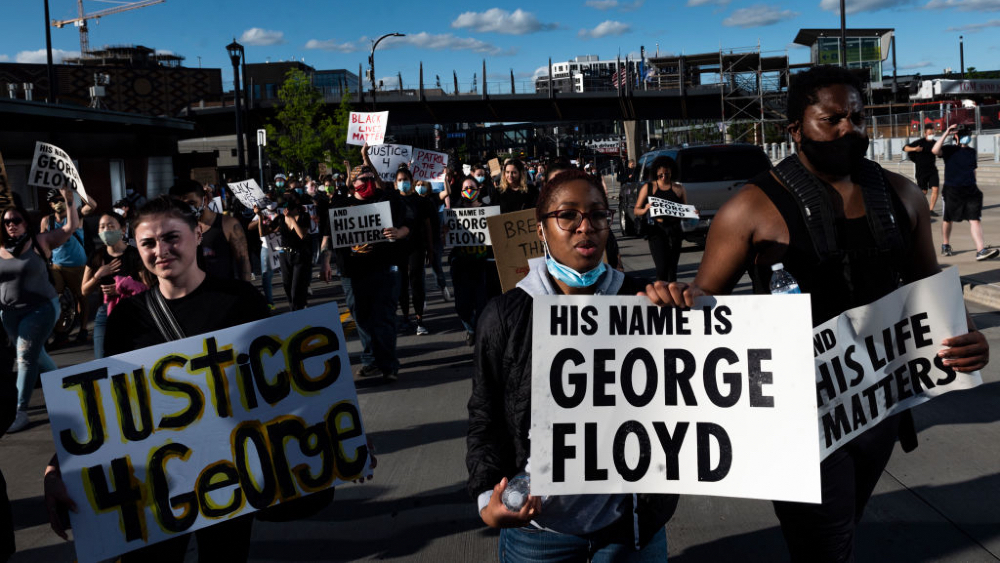If you’re interested in sharing your opinion on any cultural, political or personal topic, create an account here and check out our how-to post to learn more.
____
Following the death of George Floyd on Memorial Day in my hometown, Minneapolis, Minnesota, the U.S. has seen uprisings across the country in cities like Chicago, Atlanta and Philadelphia. Many have expressed shock, via Black Twitter, that a city such as Minneapolis serves as the epicenter for the revolution, but such a notion should not come as a surprise. Activism has always been an integral part of the culture of the people in Minneapolis.
With the death of Trayvon Martin in February 2012 in Sanford, Florida at the hands of George Zimmerman, Minneapolis mobilized and protested downtown, with me as a participant. In a not-so-popularized case, Jamar Clark was murdered by a Minneapolis Police Officer in November 2015. Many Minneapolis residents occupied the 4th Minneapolis Police Precinct for 18 days to demand justice until they were forced to evacuate the precinct.
Again, in July 2016, residents of Minneapolis protested after the unjustified death of Philando Castile in Falcoln Heights, Minnesota by a Saint Anthony police officer. Organizers hosted “die-ins” downtown, and protesters blocked off the I35-W Bridge — the third busiest highway system in Minnesota. Unfortunately, the officer in the Philando Castile case was found not guilty. There were no charges brought against the officer in Jamar Clark’s case. The activism in Minneapolis is not unique to the 21st century; the city has seen this same activism throughout the 20th century as well.
The Morrill Hall Takeover
The Morrill Hall Takeover was a student-led protest by majority Black students at the University of Minnesota, specifically the members of the African American Action Committee (AAAC). The Morrill Hall Takeover was not the first initiative that the members of the African American Action Committee took to present demands to the president of the University of Minnesota in order to get their needs met as Black students on campus. On April 11, 1968, the AAAC presented demands, including funding scholarships for Black graduates from Minnesota high schools, counseling for Black students, creating a department for African American studies and reviewing athletic department policies toward Black athletes.
In December 1968, Black students asked President Malcolm Moos for financial help for a Black conference that would be held in February of 1969, but only $1,500 was raised by January of 1969. The members of the AAAC realized their needs were not being taken seriously in regards to the conference, as well as it being isolation of an African American studies department and the marginalization Black students felt on campus.
They presented the president with more demands on January 13, 1969, asking for the establishment of an Afro-American studies department by the fall of 1969, help from the university and aiding half of the expenses for the Black conference and, lastly, to transfer the Martin Luther King Jr. scholarship fund supervision to an organization in the Black community. They agreed to come back that Tuesday to speak with President Moos. The deadline for the university to respond to the proposal was that Tuesday, at 1 p.m. President Moos met with 50 to 60 Black students and after 25 minutes, he assured them actions were being taken regarding their concerns. Despite the demands presented by the members of the AAAC, the president of the University of Minnesota and other administrative personnel did not move with haste to assist these students with their needs. On January 14, 1969, the 24-hour occupation of Morrill Hall was staged, which held the bursar and records office, demanding their needs be met, and with speed.
On January 15, 1969, the demonstration ended and the protestors and administration came to an agreement. The agreement was to support the development of an academic program leading to a bachelor’s degree in African American studies, supply AAAC with $5,260 from non-public funds for the Black conference and add seven community members to the 14 board members of the Martin Luther King Scholarship Fund. Even though it took over a year, the members of the AAAC finally got their demands met, and in the fall of 1969, an African American studies department was successfully established.
Now
Considering Minneapolis’ past with activism and what has unfolded recently in May 2020, the activism and uprisings in Minneapolis should be no surprise. After the death of George Floyd, protestors occupied 38th and Chicago, the street George Floyd was murdered on. Protestors also occupied the 3rd Minneapolis Police Precinct, which eventually went up into flames. The first couple weeks there were daily protests. The Minnesota National Guard were even called in. Rubber bullets were shot at protesters, but that did not deter the movement. A curfew was even set, but that did not hinder the passion of the protestors to demand justice. There are still protests being organized now, in August.
Although Minneapolis has finally received somewhat of recognition for the activism displayed here, it is important to remember that it is certainly not new.
